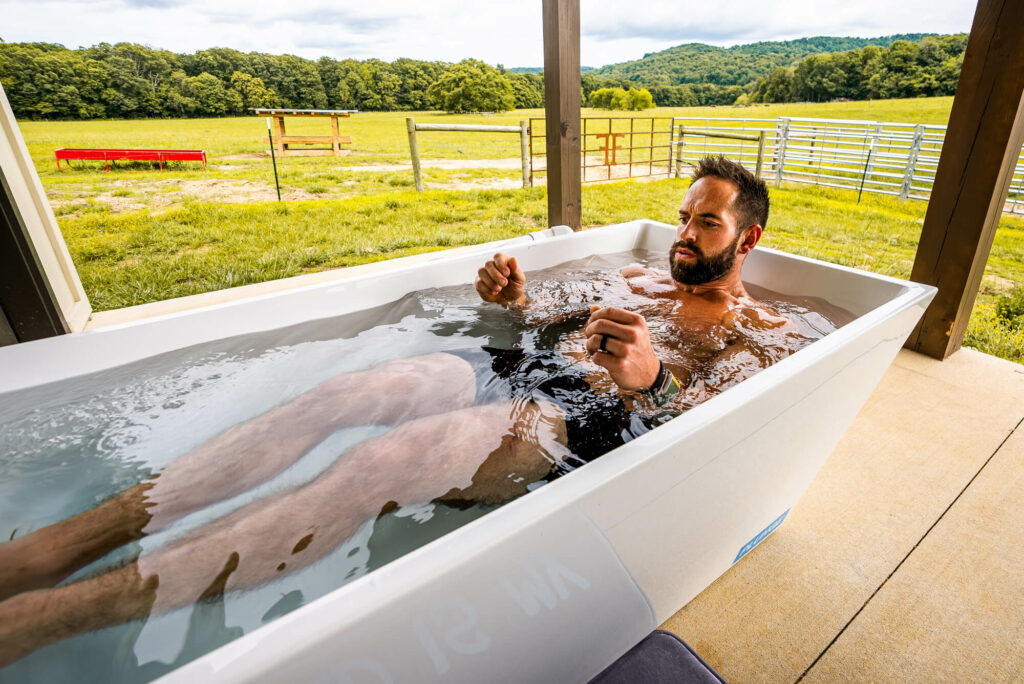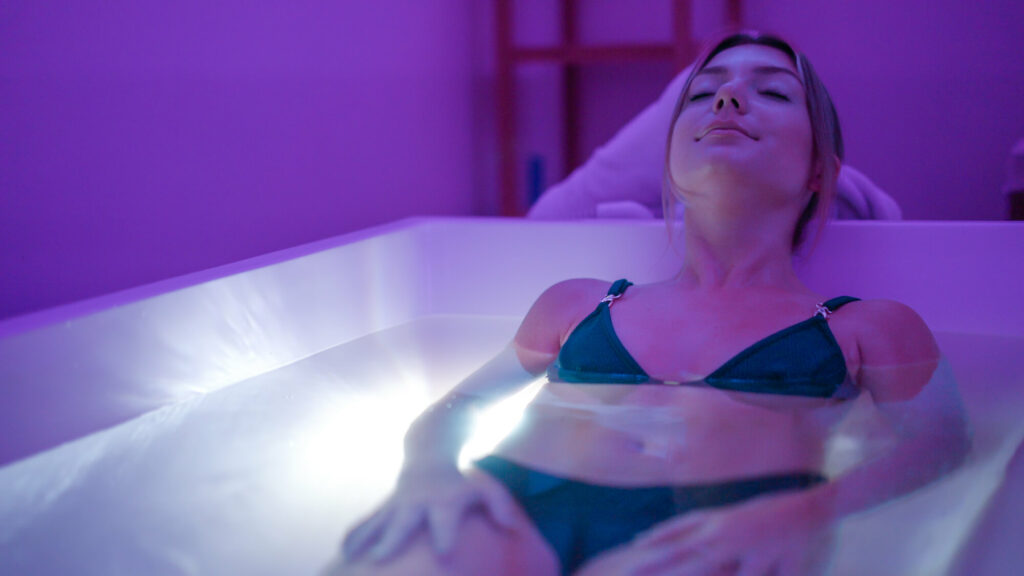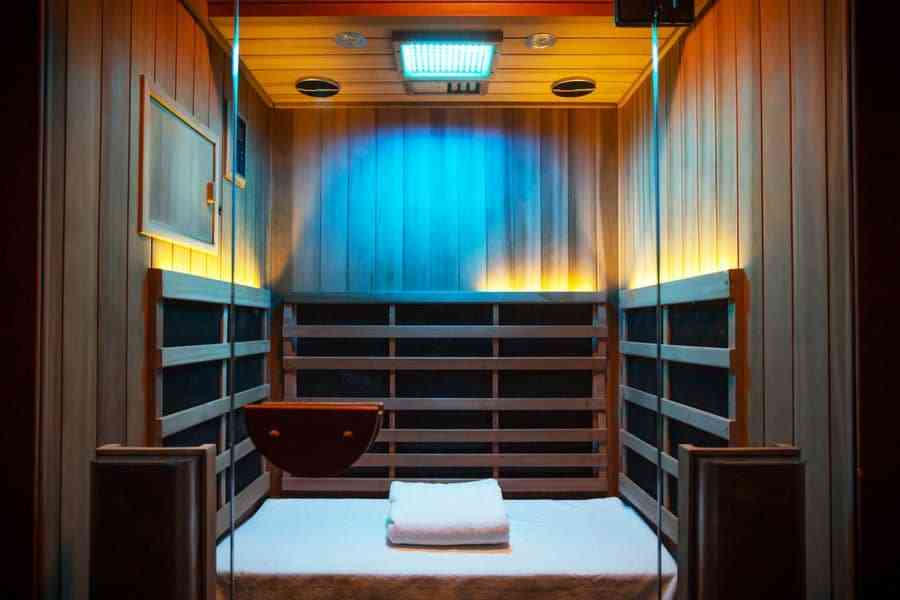Regarding muscle recovery, many athletes and fitness enthusiasts are always looking for innovative methods to enhance healing and increase performance.
One method that has gained popularity in recent years is ice bathtubs. Professional athletes and trainers have long used ice baths to alleviate soreness, reduce inflammation, and promote faster recovery.
While the idea of submerging oneself in frigid water may sound daunting, many athletes swear by the benefits of ice bath tubs.
Designed to aid in muscle recovery, these tubs can offer numerous advantages that contribute to enhanced pain relief and recovery.
But what exactly is the science behind this popular technique? How can ice baths help your muscles recover, and what are their supposed benefits?
In this article, we will explore the intricate mechanisms involved in ice baths, breaking down their effects, optimal temperature, duration, and how to prepare for your sessions.
If you’re tired of dealing with persistent muscle soreness or constantly striving to perform at your best, this article will equip you with the knowledge and practical tips needed to make informed decisions about incorporating ice bathtubs into your recovery routine.
Whether you are new to cold therapy or have been curious about its validity, keep reading to uncover the captivating science behind ice bathtubs.

How do ice bathtubs work?
Understanding the science behind cold therapy is essential to comprehending how ice baths aid in muscle recovery. When exposed to freezing temperatures, several physiological responses occur within the body:
- Vasoconstriction: The application of cold causes blood vessels to constrict, reducing blood flow to the muscles and surrounding tissue. This constriction subsequently helps minimize inflammation, soreness, and swelling.
- Dull sensation of pain: Cold exposure can also numb pain receptors, temporarily relieving muscle soreness or discomfort from intense workouts or injuries. This numbing effect contributes to overall relief and relaxation during the ice bath session.
To unlock the maximum potential of ice bathtubs, it’s crucial to understand that there are different stages involved in the recovery process when utilizing cold therapy:
- Cool-down: Immediately after intense exercise, a cold bath helps decrease the body’s core temperature, reducing sweating and heart rate. This phase aids in calming the body and preparing it for the next stage of muscle recovery.
- Circulatory stimulation: As the cold is gradually introduced, the body’s blood vessels constrict, followed by dilation once you step out of the water. This alternation significantly impacts circulation and enhances oxygen and nutrient supply to overworked muscles.
Ice bathtubs are practical because they can manipulate the body’s physiological responses to cold. By harnessing these mechanisms, athletes and individuals striving for better muscle recovery can optimize the benefits of ice bath therapy.
The Ideal Temperature and Duration For Ice Bath Tubs
Finding the right balance between cold exposure and safety is imperative to reap the maximum benefits of ice bath therapy.
While a lower temperature may seem more effective in providing relief, ensuring the session is short enough to avoid potential harm is crucial. So, what is the ideal temperature and duration for an ice bathtub session?
The Temperature:
Experts agree that the water temperature in ice baths should be between 10 to 15 degrees Celsius (50 to 59 degrees Fahrenheit).
This range allows the body’s natural recovery mechanisms to be activated without causing excessive stress or the risk of hypothermia.
However, it’s important to note that individual preferences and tolerance should also be considered. Some athletes may find temperatures slightly colder or warmer more effective for their specific needs.
The Duration:
The optimal duration for an ice bath session typically ranges from 10 to 15 minutes.
It’s essential to avoid staying in the ice bath for too long. Prolonged exposure to cold temperatures can damage the skin and hinder the body’s natural recovery.
Recommendations from experts and professional athletes:
Professional athletes and trainers often have their preferences regarding the ideal temperature and duration of ice bath sessions.
Some athletes opt for colder temperatures or longer durations to target specific areas of soreness or facilitate more profound healing.
However, it is crucial to consult a healthcare professional to determine the best temperature and duration based on individual needs, especially those with pre-existing medical conditions or injuries.
Finding what works best for each individual is essential to ensure safety and maximize the benefits of ice bath therapy for muscle recovery.

Tips for an Effective Ice Bath Tub Session
Preparing for an ice bath involves more than just jumping in and enduring the freezing temperatures.
It’s essential to follow a few key tips and techniques to maximize the benefits and minimize the discomfort. Here are some recommendations to help you get the most out of your ice bath experience:
1. Preparing for the plunge: hydration, warm-up, and mental preparation
Before diving into the chilly depths, taking certain steps to prime your body and mind for the experience is essential. Consider the following tips:
- Hydration is vital: Ensure you are well-hydrated before taking an ice bath. This will not only make the session more comfortable but will also aid in muscle recovery.
- Warm-up exercises: Before stepping into the ice bath, use light warm-up exercises to increase blood circulation. These can include dynamic movements like jumping jacks or jogging in place for a few minutes. This will help your muscles adjust better to the cold temperatures and enhance the ice bath’s benefits.
- Mental preparation: Mentally ready yourself by focusing on positive and calming thoughts. Deep breathing exercises or visualization techniques can help relax your mind and release tension.
2. Post-bath practices: compression, stretching, and proper recovery techniques
After emerging from the water, several post-bath practices can aid muscle recovery. Here are some helpful techniques:
- Compression garments: Consider wearing compression garments, such as compression socks or sleeves, after an ice bath session. These garments can help reduce inflammation, promote circulation, and support your muscles.
- Gentle stretching: Perform gentle stretching exercises to improve flexibility and prevent muscle stiffness. Focus on the major muscle groups targeted during your workout or physical activity.
- Proper recovery techniques: After intense physical activity, giving your body time to recover is crucial. This may include techniques such as foam rolling, light cardio exercises, or even scheduling a follow-up massage.
Remember, the muscle recovery process doesn’t end with the ice bath alone. By implementing these post-bath practices, you can facilitate the healing process and optimize the benefits of your ice bath sessions.
Cold Plunge Tubs With Free Canada-Wide Delivery
The science behind ice baths and their ability to support muscle recovery is fascinating.
If you’re looking to enhance your post-workout recovery, consider investing in a premium Plunge Tub. This will make cold therapy even more inviting and effortless.
At Canada Wellness, we offer sales and delivery across Canada, making it convenient for you to experience the benefits of cold plunges for yourself. Take your recovery to the next level with Canada Wellness and experience the various benefits of ice baths today.





